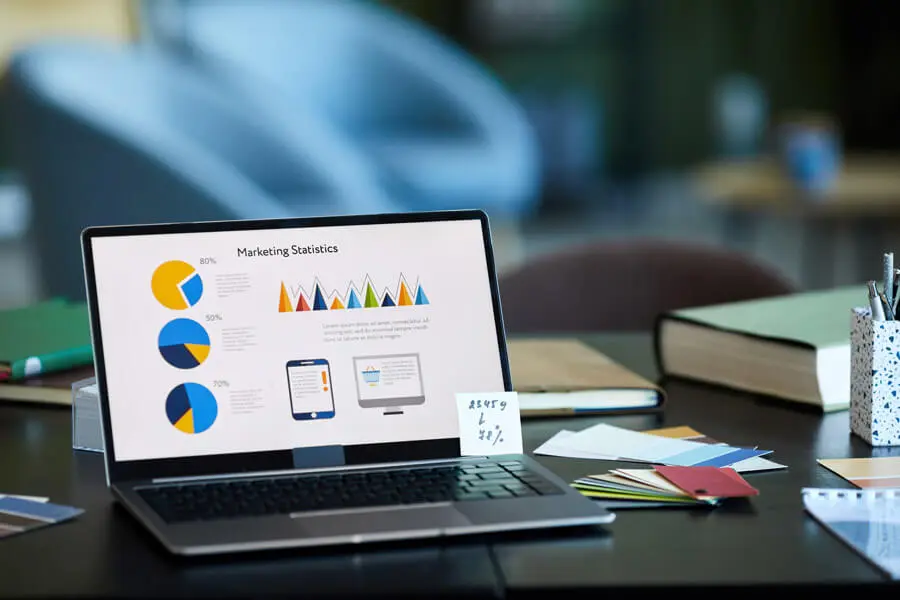Website conversion rate is a term you often hear when talking about completed orders, subscription upgrades, or clicks. But what do these numbers tell you about your customers—the people you want to attract, engage, and convince to take action?
If you don’t understand what these conversion metrics mean for your business or how to use them to improve your products or services, they’ll be isolated numbers without real value.
To truly understand and boost your website conversions, start by getting to know your users. Find out what brings them to your site or product, what obstacles they face, and what motivates them to act.
Instead of focusing on the final result—the conversion—pay attention to what happens before the user experience. Understanding this will help you make better decisions and improve your website’s performance in a way that genuinely benefits your customers.
Introduction To What is website conversion Rate?
A website conversion happens when a user completes a desired action on your website, like purchasing or filling out a contact form. Every business website aims to boost the website conversion rate.
Here are two types of website conversions:
Micro-conversions occur when a user takes a small step toward your main goal. These steps, such as subscribing to a newsletter, downloading an ebook, or watching a product video, help increase the website conversion rate.
Macro-conversions happen when the main goal is achieved. This could be a sale, a new paid subscriber, or a completed contact form. For more help with boosting your conversions, click on Shopify CRO services.
10 Smart Tips to Boost Your Website Conversion Rate
Let’s dive into 10 smart tips to boost your website conversion rate for desktop and mobile sites.
1️⃣ Use a CRO planner
Starting with conversion rate optimization can feel overwhelming.
What is the first step to improving your website conversion rate optimization? Use a CRO planner.
With a CRO planner, you can analyze your site and create a strategy to boost your e-commerce conversion rate.
For instance, using a HubSpot CRO planner, you’ll get step-by-step instructions on how to audit your site, find areas to improve your conversion funnel, understand your site users, and perform A/B testing and experiments.
CRO planners are helpful because they guide you through the entire process from start to finish. For advanced solutions, consider Shopify headless services to enhance your site further.
2️⃣ Shorten your forms
One reason users don’t convert is friction in the process. For example, visitors might feel free to fill it out if you have a long-form, hurting your website’s conversion rate.
Your goal is to eliminate this hesitation, not create it. By shortening your forms, you build trust with your audience. This can help increase your website conversion rate.
Short forms are quicker to fill out, making users more likely to complete them. For more tips on optimizing your site, click on Shopify CRO services.
3️⃣ Include social proof
Did you know 89% of people check online reviews before buying something? A study by Canvas8 for Trustpilot found that 49% of consumers say positive reviews are one of their top three reasons for purchasing. Your online reputation dramatically affects your website conversion rate optimization.
To boost your e-commerce conversion rate, show social proof on your site—link to your Yelp page or other places where customers have left reviews.
Also, add testimonials and reviews on your site so visitors don’t have to go elsewhere.
Make it clear that your customers love your product or service. If it’s not apparent, your conversion rate will drop. For even better results, consider using Shopify headless services.
4️⃣ Track how people interact with your site
Improving your website conversion rate is easier if you need help understanding how users interact with your site.
How can you spot where visitors are getting stuck? Use website analysis tools to see screen recordings of users on your site. You’ll find out what they click on, which offers they skip, and where they stop filling out forms. This insight can help you increase your website conversion rate.
These tools often include heat maps that show what elements grab attention and draw the eye. Tools like Crazy Egg or HubSpot’s website grader can help you see what’s working and identify areas for improvement. To further enhance your site, click on Shopify CRO services.
5️⃣ Add live chat
Visitors might have questions or concerns about your product or service when they don’t convert.
To keep potential customers from leaving, add live chat to your site. This can help with website conversion rate optimization.
With live chat, your customer service or sales team can address any concerns and help improve your e-commerce conversion rate.
Providing instant support reassures visitors and encourages them to buy. For more advanced options, check out Shopify’s headless services.
6️⃣ Test your offers
Sometimes, it feels like you’ve done everything—you’ve written excellent copy, added social proof, and optimized your forms—but you’re still not converting.
When this happens, it’s time to check your content offers. Do they match your audience’s interests? Are they creative and engaging? Do they make sense for the page they’re on? These factors are crucial for improving your website conversion rate.
Think about your current offers and ask these questions. For instance, offering a free trial or consultation is pretty standard. Instead, try something unique like HubSpot’s Website Grader. This gives customers valuable, free advice without needing to schedule time. Offers like this can help increase your website conversion rate.
Tangible and engaging offers always perform better than generic ones. To improve conversions, analyze and test your content offers. For more advanced strategies, click on Shopify CRO services.
7️⃣ Conduct A/B testing
Sometimes, what’s working and what isn’t needs to be clarified. When this happens, you should conduct A/B tests to optimize your website conversion rate.
Try different headlines, colors, copy, layouts, and CTAs to see your audience’s response. This can significantly improve your e-commerce conversion rate.
Use originality in your experimentation. For example, test an entirely new type of CTA or change the format of your copy.
Tools like Shopify headless services can help you run these tests more efficiently and effectively.
8️⃣ Increase trust and remove friction
Users will only convert if they trust your brand and the process is simple enough.
So, how can you build trust?
To boost your website conversion rate, use tactics like money-back guarantees, regularly updating your site content, avoiding spammy links, and making your site user-friendly.
If your site needs to be updated or has broken links, it creates friction and distrust, hurting your conversion rates. To increase your website conversion rate, ensure everything is up to date and functioning correctly.
You can also include team bios so your audience knows who they are getting information from. For more advanced tips, click on Shopify CRO services.
9️⃣ Create abandoned cart email campaigns
Have you ever added something to your cart on a site but have yet to check it out? We all do it, and it’s likely happening on your site, too.
Remember these potential customers. Send an abandoned cart email campaign to improve your website conversion rate optimization.
With this type of campaign, remind users about the products in their cart, send a follow-up email, and include a discount or special offer. This can significantly boost your e-commerce conversion rate.
You’re missing out on conversions if you don’t send these emails. For more advanced solutions, consider using Shopify headless services.
🔟 Communicate your value proposition
Your value proposition should be clear on any landing page. You need to know your audience and buyer persona well to do this.
Write copy for your target audience to improve your website conversion rate. Discuss their goals, motivations, and pain points.
Focus on the benefits of your product or service, not just the features. Benefits help customers see how your product can improve their lives, while features are easy to skim over.
Your copy should show how your product or service solves your audience’s problems. If you’re not getting conversions, check if your copy is compelling. To increase your website conversion rate, start your Shopify journey today.



